Le Labyrinth Festival prend place au milieu des montagnes, à Naeba, une station balnéaire dans la province de Niigata au Japon. Depuis bientôt 15 ans les organisateurs promeuvent une musique sans concession et invitent pour cela des artistes extrêmement respectés bien que rarement starifiés. La réputation du festival a largement dépassé les frontières du pays du soleil levant chez les amateurs de musique électronique pointue, aussi bien que chez les artistes programmés, ou non… En effet, en plus de sa dimension à taille humaine (jauge limitée à 2500 personnes), du lieu magnifique dans lequel il prend place et du sound system hors norme mis en place, la vibe y est réputée excellente.
Les photos et vidéos qu’on peut trouver en ligne, ainsi que les témoignages, pas si nombreux (d’où l’idée de celui-ci) m’ont toujours fait rêver d’y aller. Cela dit, il n’est pas forcément simple pour un européen d’aller en rave à l’autre bout du monde, aussi bien en terme de budget que de bloquer une ou deux semaines de vacances au milieu du mois de Septembre.
Par chance, 2015 fut mon heure. Il faut savoir que pour un non résident japonais, il assez difficile d’obtenir un ticket. Il y a deux solutions : soit vous connaissez quelqu’un au japon qui peut vous en acheter un et vous l’envoyer, soit vous réussissez à obtenir l’un des 100 pass envoyés dans le monde par les organisateurs. Ces derniers sont vendus mi-juillet et partent en une minute. Pourtant, c’est comme cela que je vais obtenir mon précieux sésame. Je suis tellement motivé que je pars seul, mais je ferai connaissance à Tokyo d’un français qui y va avec des amis.
Le festival a lieu du samedi au lundi, le lundi étant Keirō no Hi, le jour des personnes âgées, férié au Japon. Je prévois ainsi de partir le mercredi précédent, ce qui me fait arriver le jeudi midi heure locale. Pour un européen il est à mon avis indispensable d’arriver au moins 2-3 jours avant pour récupérer du voyage et du décalage horaire (+ 7h pour les français) et ainsi profiter sereinement. D’autant plus pour moi qui n’habite pas à Paris et ai donc du prendre bus et train très tôt le mercredi matin pour rejoindre la capitale. Il est probablement moins fatiguant de faire un vol sans escale, cela dit il est possible d’obtenir des prix défiant toute concurrence chez Aeroflot, avec un changement à Moscou.
Samedi, jour J
Le premier acte débutant à 18h45, et étant bien sûr hors de question de louper la moindre minute de musique, il vaut mieux ne pas partir trop tard de Tokyo.
Je rejoins la gare centrale de Tokyo afin d’attraper le Shinkansen (train grande vitesse nippon) de 12h16. Ici il est fortement conseillé d’avoir une bonne avance, la gare de Tokyo étant un véritable labyrinthe (sans mauvais jeu de mot) pour un néophyte, immense et grouillant de monde. J’entre à la dernière minute dans le train qui va m’emmener à Echigo-Yuzawa, une station balnéaire dans la montagne à 1h30 environ au nord de Tokyo. Là il faut attendre un car qui en 45 minutes emmène des voyageurs qui sont tous là pour la même raison à Naeba, petite ville encore plus perdue dans la montagne, où a lieu le Labyrinth. Une fois là-bas le voyage n’est pas terminé pour tout le monde. Ceux qui ont choisi l’option hôtel ont juste à le rejoindre, les nombreux autres qui comme moi ont choisi l’option camping ont encore une navette de 10 minutes à prendre pour arriver sur le lieu précis du festival, le camping étant à quelques dizaines ou centaines de mètres du dancefloor. L’hôtel a l’avantage du confort, le camping celui de la gratuité et de la proximité de la rave.
Une fois déposé sur le dernier parking, l’excitation monte. Il est 16h, et l’on entend les basses du soundcheck qui résonnent. Après un rapide passage à l’entrée où l’on vous demande si vous n’avez pas de bouteilles en verre (vous pouvez apporter tout ce que vous voulez en boisson et nourriture), j’arrive sur le dancefloor. Les organisateurs apportent un soin particulier à la scénographie. Le dj booth est surplombé d’un grand tipi, lui même entouré de deux sculptures en bambou, de deux grappes d’enceintes Funktion One et de deux autres tipi. Autour du dancefloor on trouve un bar, et diverses boutiques de bijoux et vêtements dans un style plutôt hippie. Un côté est à flanc de montagne, bordé d’arbres, l’autre côté est ouvert et bardé de drapeaux étendards tout le long.
Après un moment à admirer les lieux, il est temps d’aller installer la tente sur le camping, qui est déjà bien rempli. Le chemin qui le sépare du dancefloor est entouré de stands de nourriture. Il est ici possible de manger sushis, poulet teriyaki, noodles, burgers, etc. Tout est cuisiné sur place et c’est très bon, pour un prix modique – 600-700 yens le plat, soit 4,50 à 5€ environ.
Il en va de même pour le bar, où la canette de bière coûte 500 yens et la pression ou les hards 600 yens.
Après avoir installé la tente, enfilé des vêtements plus chauds pour la soirée (il fait très bon la journée mais la nuit tombe tôt, vers 18h, et est très fraiche), il est temps de se diriger vers le dancefloor pour aller écouter le premier live qui ne va pas tarder à commencer. Certains en profitent pour prendre à diner.
18h45, Aleksi Perälä présente son live « The Colundi Sequence ». C’est parti pour 1h15 d’IDM qui me font souvent fortement penser à du Plaid, parfois à du Aphex Twin. Ce n’est d’ailleurs pas étonnant, le bonhomme étant signé chez Rephlex, le label d’Aphex.
Je ne suis pas expert en braindance mais je trouve le live extrêmement bien maitrisé, varié, jamais ennuyant et très bien construit. Certains passages sont cérébraux, d’autres très énergiques, avec un BPM parfois très élevé. On sent une bonne recherche derrière les textures sonores, qui sont reproduites à la perfection par le sound system Funktion One.
A 20h, Sebastian Mullaert et Ulf Eriksson reprennent les commandes dans un format hybride assez inhabituel, le premier étant en live et le second en dj set. Il est parfois difficile de savoir qui fait quoi, cela dit je reconnais quelques morceaux, dont certains me rappellent Minilogue. C’est globalement minimaliste, avec quelques envolées trancey (toute proportions gardées, je pense encore au côté mélodieux de Minilogue). Tout est hyper fluide et s’enchaine parfaitement, de manière cohérente, je suis conquis.
Le dernier set de la journée est confié à Nuel de 23h30 à 2h15, qui produit notamment parfois avec Donato Dozzy. Il est là aujourd’hui en tant que dj, et ce sera d’ailleurs l’un des rares sur vinyle. Malheureusement il va justement avoir des problèmes de cellule qui saute, plusieurs fois, et on finit par le sentir assez stressé. C’est dommage, c’est toujours mieux d’être détendu pour entrer vraiment dans un set, et je me dis que certains morceaux auraient pu être enchainés dans un ordre différent. Quoiqu’il en soit la sélection est absolument excellente, une techno ambiant à l’italienne, parfois dronesque, parfois breakée, parfois plus énergique à l’image du Talatone de Blawan qu’il joue entre deux morceaux plus breakés et moins dancefloor. J’aime beaucoup et reconnais un morceau toutes les demi-heures environ, ce qui est presque étonnant.
On voyage, avant de regagner sagement nos lits, la journée commence tôt le lendemain où 17h de dancefloor nous attendent.
Jour 2 – Songs of loss and celebration
Levé dans les 8h du matin, c’est inhabituel pour un festival, mais je compte ne pas louper un seul morceau du premier set qui commence à 8h45. Sur le chemin qui m’amène au dancefloor je m’arrête prendre un café à l’un des stands, café qu’on peut ensuite boire sur le dancefloor, ou alors posé sur le côté où sont installées quelques tables et chaises. Pas mal de gens sont très prévoyants et ont installé leur siège de campeur directement sur l’arrière du dancefloor.
Le résident de Mindgames (organisateurs du festival), Hiyoshi, va faire un set d’1h30. Une musique ambiant relaxante, quelque peu atmosphérique, éthérée, absolument parfaite pour s’éveiller tranquillement. Les morceaux s’enchainent de manière très fluide, c’est bien mixé. Certaines personnes sont assises, d’autres font du yoga, certains bougent tranquillement, parfois avec leurs enfants.
A 10h15 c’est So, l’autre résident Mindgames qui reprend, pour 1h30 de set entre une house progressive et une techno dubby. C’est une très bonne continuité avec le set précédent et le live qui nous attend ensuite. Il fait beau, le dancefloor commence à se remplir.
Mathew Jonson reprend à 11h45. A part un Roland JX-3P et un Macbook je ne vois pas ce qu’il utilise comme instrument. Pendant 1h45 il va exécuter un live qui me semble absolument parfaitement calibré pour le Labyrinth : deep, trancey, minimaliste, techno… Tout comme dans un dj set, il n’est parfois pas toujours gagné que les morceaux s’enchainent bien dans un live, de manière cohérente, sans temps mort. Ici tout est fluide, Mathew gère de bout en bout ; en même temps le bonhomme tourne depuis longtemps et n’est pas respecté pour rien.
A 13h30 c’est Scuba qui reprend ; il va jouer pendant la première heure de son set une tech-house calibrée dancefloor, un peu trop efficace pour être honnête. Le seul morceau qui retient mon attention est de Rhadoo si mes souvenirs sont bons, que je trouve de qualité (extrait de l’EP Dor Mit Oru sorti en 2008 sur Cadenza). J’en profite pour aller m’assoir un moment, ça commence à tirer sur les jambes. Je trouve ce choix de sélection d’autant plus étonnant que ce n’est pas trop l’image que j’ai du Labyrinth musicalement, et que pourtant Scuba y a joué au moins trois fois.
Pendant les deux dernières heures de son set il va jouer plus techno ; dubby, minimal, certains passages sont vraiment biens, d’autres un peu moins. Ce sera la performance des trois jours qui me convaincra le moins.
On attend avec impatience Peter Van Hoesen qui est un habitué des lieux et un excellent dj. Il commence à 17h et va atomiser le dancefloor en 3h30 de set. Le belge nous offre un véritable voyage, en passant de la techno minimale à l’electro, de l’electro à la techno – avec un moment carrément rave -, en nous faisant parfois redescendre et planer sur des nappes deep, ambient, trancey. Une véritable leçon, la sélection est absolument sans faute, variée tout en étant cohérente. C’est la rave.
Pour moi une des meilleures performances du week-end.
Mike Parker reprend à 20h30 pour un live d’une heure, qui va déborder un peu d’ailleurs. Il fait nuit noire, et ça tombe plutôt bien pour écouter ce genre de musique sombre. L’homme, signé chez Prologue, Semantica, ou plus récemment Mote-Evolver, va délivrer une techno mentale, dronesque à son image. Très peu de hi-hats, mais des textures sonores de l’espace ; on n’est pas là pour hurler mais faire un voyage introspectif. A ce moment, la puissance sonore est absolument hallucinante, la basse est presque palpable et je suis content d’avoir mes réducteurs auditifs.
J’aime beaucoup ce genre de musique, mais je trouve qu’il manque un tout petit quelque chose, quelques micro-variations dans les morceaux, au niveau rythmique notamment. Ceci étant, l’atmosphère est là, et ça sonne à la perfection ; l’américain utilise toute la largeur de fréquences offerte par le sound system, tout est à sa place, ni trop en avant ni pas assez.
Atom™ & Tobias arrivent sur scène ; il est 21h30 et ils vont exécuter 2h30 de live. Je reconnais en machines les légendes Roland que sont une TR808, une TR909, un SH101, ainsi que deux MacBook et peut être quelques autres instruments ou boites à effets. Les deux allemands se connaissent depuis longtemps et font de la musique depuis des années. Et ça va s’entendre. Leur live est minimaliste, ils prennent vraiment le temps d’installer des ambiances et un groove discret. Le maitre mot ici est la subtilité. Les 2h30 sont impressionnantes de maitrise, tout est parfaitement fluide, rien n’est vulgaire, il n’y a jamais trop de choses, place à l’essentiel. La grosse grosse classe. Une autre des performances notables du Labyrinth 2015 qui était à priori complètement improvisée.
Minuit passé, c’est John Elliot qui reprend ; l’américain est le créateur de Spectrum Spools, sous label de Editions Mego, prestigieuse maison où l’on retrouve des signatures comme Bee Mask, Donato Dozzy, Neel…
Pendant 1h30 il joue une ambiant assez poétique, à la Steve Roach, vraiment une belle manière de clore cette magnifique journée. C’est d’ailleurs assez inhabituel d’avoir un vrai set ambiant pour clore une journée de festival, et c’est très appréciable.
Dernier jour, Keirō no Hi pour certains, mind games pour d’autres…
Réveil rapide à 8h30, il est temps de se prendre un café et de rejoindre le dancefloor où Sebastian Mullaert entame à 9h sa deuxième prestation du festival, cette fois-ci en tant que dj.
L’entrée en matière est belle, avec 40 minutes d’ambiant pour se détendre, pendant que le soleil commence déjà à nous réchauffer. Les premiers kicks arrivent ensuite, doux, ronds, discrets. On commence à danser tranquillement sur une house dubby et minimaliste, quelques pads deep ça et là rendent le set encore plus soyeux. Un bonheur.
A midi c’est Patrick Russel qui prend en main les platines, et se paye le luxe de jouer carrément 1h d’ambiant alors que le dancefloor est plein. C’est une rave d’initiés et les gens sont là pour écouter ce que les artistes leur proposent, et je ne peux m’empêcher de penser qu’en France il y aurait forcément eu certaines personnes irrespectueuses pour crier leur mécontentement. Cette heure d’ambiant est parfois sombre parfois lyrique, avant d’enchainer sur 2h d’une techno drone, industrielle, parfois dub.
15h. Probablement le live act le plus attendu commence. Donato Dozzy et Neel forment le duo Voices From The Lake ; habitués du festival, ils ont la lourde mission de clore le Labyrinth 2015, ce qui semble être une formalité pour ce duo déjà légendaire de la techno italienne.
Je repère dans leur setup une machine Elektron (Octatrack ?) pour Dozzy, une TR909, un petit synthé modulaire en valise, un Macbook pour Neel et je ne vois pas le reste.
Comme le décrit assez justement un commentaire que je lis sur internet, « Donato Dozzy and Neel destroy and rebuild universe », ce qui résume assez bien ces presque 5h de live. Les deux compères vont passer par tous les genres de techno, deep, ambiant, martiale, c’est parfois carrément cérébral, parfois carrément rave. Sur 4h50 de live tout est bien, les deux italiens ne déçoivent pas, la vibe restera à son comble jusqu’à la fin.
Hélas, à 20h il est temps d’aller manger un dernier plat, avant de se coucher assez tôt tant on est épuisé par ces 3 jours intenses.
Epicentre sonore
Au Labyrinth, la musique est primordiale. C’est le centre de tout, on n’est pas dans un parc d’attraction. Les organisateurs sont des passionnés, il n’est d’ailleurs pas rare de voir le créateur du festival danser de manière enivrée au fond de la scène ou sur le dancefloor.
On y trouve une seule scène, et c’est selon moi un point important : on n’a pas à choisir entre une multitude d’artistes en essayant de tout voir, pour au final ne profiter de rien. Ici on écoute ce que l’on nous propose, on découvre, on aime (ou pas selon les goûts, mais c’est rare).
On sent que tout est fait pour que les amateurs de musique se sentent bien, un esprit qu’ils ont su garder au fil des ans. La jauge reste limitée ce qui fait qu’il est très agréable de danser en ayant de la place. La scénographie est sobre mais très belle, ici pas de méga écran led ou de lumières de toutes les couleurs. On n’est clairement pas à Ibiza, et tant mieux. Tout est fait avec goût et de manière simple, on n’est pas dans la débauche de moyens too much. Le tipi central est éclairé d’une lumière fixe qui change de couleur doucement de temps en temps, pas de manière dynamique sur chaque kick, tout comme les deux sculptures en bambou qui l’entoure. Les deux grappes d’enceintes sont éclairées de manière fixe en violet, couleur de la marque Funktion One.
Le public, partie très importante d’une fête, est très respectueux et éduqué. Ici les gens sont globalement des connaisseurs. L’ambiance est incroyable et pourtant je ne croiserais pas de gens dans des états lamentables ; la moyenne d’âge est plus élevée que dans les clubs auxquels je suis habitué, ce qui peut expliquer cela. Il n’y a d’ailleurs pas de barrières devant la scène, ce qui semble inconcevable ailleurs. Seuls trois agents de sécurité sont chargés de vérifier que personne ne monte sur scène ou sur la déco, sans que ça pose problème, les gens respectant totalement ce qu’on leur offre.
Et puisque le son est central, le sound system revêt une importance capitale à la rave qu’est le Labyrinth. Une puissance à couper le souffle, et pourtant d’une précision hallucinante. Les aigus sont clairs comme du cristal, les médiums bel et bien présents et définis, les basses ne sont pas noyées et on entend toutes les notes même les plus graves. Il est difficile de classer un sound system par rapport à un autre mais on est ici sans le moindre problème au niveau de qualité et de puissance du Berghain ou de la Fabric. A tel point que c’est parfois les morceaux eux-mêmes qui semblent ne pas avoir été assez bien produits.
Bref, le Labyrinth à la réputation d’être le meilleur festival du monde, même de la part des artistes qui y jouent. Je n’ai pas voyagé assez pour l’affirmer, mais c’est très probablement vrai. Un mix improbable entre le Berghain et Burning-Man – oui, la comparaison est osée et inexacte, mais ça vous donne une idée -, qui associe le meilleur de chaque élément nécessaire à une bonne fête : de la musique de qualité, sur un bon sound system, écoutée par un public ouvert, connaisseur et respectueux, dans un lieu beau et atypique, décoré avec goût par des gens passionnés.
Le Labyrinth est un festival qui correspond bien au mantra rave des années 90 : Peace, Love, Unity, and Respect.
Pour les geeks du son…
Au Labyrinth, on a affaire à des passionnés de musique qui veulent l’entendre dans les meilleures conditions. C’est pourquoi le sound system est un point essentiel.
Depuis les débuts du Labyrinth c’est la marque Funktion One qui est choisie, une marque qui fabrique des enceintes qui ne sont pas forcément les plus facile à régler, d’où des déconvenues parfois, mais qui sont capables du meilleur avec des gens compétents.
On trouve ainsi de chaque côté de la scène une grappe de 12 Resolution 5 (des têtes longue portée qui ouvrent à 25°), en dessous desquelles 2 stacks de 6 F218 pour le kick et la basse et 4 IB218 surmontés de 2 infrahorn pour une belle réponse dans l’infragrave.
Il y a également une Resolution 2 de chaque côté pour les infills.
Côté amplification j’ai pu apercevoir quelques amplis de la marque MC² qui est préconisée par Funktion One et d’excellente qualité.
Niveau sources, c’est du classique pour les djs, 2 Technics SL1210 Mk2 (équipées de pieds amortis Isonoe et posées sur des plaques de marbre), et 3 Pioneer CDJ 2000 Nexus. En table de mixage une Formula Sound FF6000, une marque anglaise qui fait dans la haute qualité et qui fabrique ce modèle pour Funktion One.
Mais ce serait trop simple de s’arrêter là ; le signal des CDJ est pris via leur sortie digital et entre dans un convertisseur numérique vers analogique avant d’entrer dans les line in de la table de mixage.
Plutôt que d’utiliser les entrées phono de la FF6000 pour les Technics, (qui pourtant doivent être d’excellente qualité vu le niveau de gamme du mixer) elles passent par un préamplificateur phono hifi avant d’entrer dans les line in.
Tous les câbles sont audiophiles, d’une épaisseur d’1 cm environ. Même les câbles d’alimentation et les multiprises sont audiophiles, ce qui pour le coup est à mon humble avis inutile. Mais le résultat est là, exceptionnel.
Labyrinth festival is held in the mountains of Naeba, a sea resort in the Niigata district in Japan. It’s been 15 years that organizers are promoting music with an uncompromising approach and inviting highly respected artists without caring about trends. The reputation of the festival has gone far beyond the borders of the Land of the Rising Sun, for electronic music lovers, as well as artists programmed or not…
Indeed, in addition to its human scale size (the capacity is limited to 2500 people), the beautiful place in which it takes place and the extraordinary sound system, the vibe is deemed excellent.
Photos and videos that can be found online, and the testimonies that are not so numerous (hence the idea of this one) have always made me dream to go there. That said, it is not easy for a European to go to a rave on the other side of the world, both in terms of budget and free time in the middle of September.
Fortunately, 2015 was my year. For a non-Japanese resident, it’s hard to get a ticket. There are two solutions : either you know someone in Japan who can buy one and send it to you or you can manage to get one of the 100 passes sent around the world by the organizers. These are sold mid-July and are gone in a minute. Yet that’s how I’m going to get my precious ticket. I am so motivated that I will go there alone, but I’ll meet French people in Tokyo who also go to Labyrinth.
The festival takes place from Saturday to Monday, Monday being Keirō no Hi, the day for the elderly, a public holiday in Japan. I plan to travel the Wednesday before, so that I’ll arrive on Thursday noon local time.
For a European it is in my opinion essential to arrive at least 2-3 days before in order to recover from travel and jet lag (+ 7 hours for the French) and be serene. Especially for me who does not live in Paris and therefore had to take a bus and a train early Wednesday morning to reach the capital. It is probably less tiring to make a nonstop flight , having said that, it is possible to obtain unbeatable prices with Aeroflot, with a transfer in Moscow.
Saturday, day D
The first act starts at 18:45 , and there is no way I miss any minute of music, so better not leave Tokyo too late.
I reach the central Tokyo Station to catch the Shinkansen (Japanese fast train) at 12h16. Here, it is highly recommended to be on time, Tokyo Station is a labyrinth (no pun intended) for a neophyte, huge and teeming. I enter at the last minute the train that will take me to Echigo Yuzawa, a resort town in the mountains, about 90 minutes north of Tokyo. You have to wait for a bus that takes 45 minutes to drive the travelers (who are all there for the same reason) to Naeba, a small town even further in the mountains, where the Labyrinth Festival takes place. Once there, the journey is not over for everyone. Those who chose the hotel option just have to them, the many others like me who chose the camping option still have a shuttle to take. 10 minutes are needed to reach the site of the festival, the campsite being just a few meters away from the dancefloor. The hotel has the advantage of comfort, the camping of the free access and proximity to the rave.
Once arrived on the last parking lot, excitement among the travelers can be felt. It is 4PM and we can hear the bass from the soundcheck that resonates. After a quick check in at the entrance where you are asked if you have any glass bottles (you may bring any drinks or food), I arrive on the dancefloor. The organizers provide a special care to the scenography. The DJ booth is topped by a large teepee, surrounded by two bamboo sculptures, two clusters of Funktion One loudspeakers and two teepees. Around the dancefloor there is a bar, and various jewelry and clothing shops in a rather hippie style. On one side there is a mountain, surrounded by trees, the other side is open and bristling with banners flags all along.
After a moment to admire the scene, it’s time to install the tent on the campsite, which is already almost full. The path between the dancefloor is surrounded by food stalls. It’s possible to eat sushi, teriyaki chicken, noodles, burgers, etc. Everything is cooked on site and very tasty for a low price – 600-700 yen or 4.50-5€.
The same goes for the bar, where a beer costs 500 yen and hard alcohols 600 yen.
After setting up the tent, I put on warmer clothes for the evening (it’s quite a warm day but night falls early, around 6pm, and it gets very cold), it’s time to head to the dancefloor, to see the first live that will soon begin. Some take the opportunity to grab some dinner.
18:45 Aleksi Perälä presents his live « The Colundi Sequence ». 1:15 of IDM that often reminds me of Plaid, sometimes of Aphex Twin. It is also not surprising, as the man has released on Rephlex, Aphex’s label.
I’m no expert in braindance but I think the live was very well controlled, varied, never boring, very well built. Some parts are cerebral, some very energetic, sometimes with a high BPM. You can feel a great work on the sound textures, which are perfectly reproduced by the sound system.
A 8PM, Sebastian Mullaert and Ulf Eriksson take the lead in an unusual hybrid format, the first playing live set while the second djs. It is sometimes difficult to know who does what, that said I recognized some pieces, some of which reminded me of Minilogue. It is basically minimalist, with some trancey surges (all things considered, I still think of the melodic side of Minilogue). Everything is really smooth and comes together perfectly, consistently. I love it.
The final set of the day is from 11:30 p.m. to 2:15 by Nuel, who sometimes produced with Donato Dozzy. He is there today as a dj, and it will be also one of the few on vinyls. Unfortunately he will have a few technical problems, with his needles jumping several times, and I end up feeling his stress. It’s a shame, it’s always better to be relaxed to really get into a dj set, and I think that some tracks could have been played in a different order. Nevertheless, his selection is absolutely excellent, ambient italian techno, sometimes more energetic like the Talatone of Blawan he played between two tracks with a breakbeat feel. The set is really enjoyable and I can recognize a song about every half hour, which is almost surprising.
We travel with the sound, before quietly going back to our beds, the next day begins early with 17 hours of dancefloor ahead.
DAY 2 : Songs of loss and celebration
Waking up at 8am is unusual for a festival, but I do not want to miss a single track of the first set that starts at 8:45. On the way to the dancefloor I stop for a coffee at one of the stands, which you can drink on the dancefloor, or enjoy on the side of it where you can find a few tables and chairs. A lot of people are very organized and have set up their camper seats directly behind the dancefloor.
The Mindgames resident (festival organizers), Hiyoshi, will play a set of 1:30. A relaxing ambient music, somewhat atmospheric, ethereal, absolutely perfect for waking up quietly. The track selection is very fluid and well mixed. Some people are seated, others do yoga, some move slowly, sometimes with their children.
At 10:15 it’s So, the other Mindgames resident who plays a 1:30 set between progressive house and dubby techno. This is a very good continuity with the previous set and before the live act that awaits us next. The dancefloor begins to fill.
Mathew Jonson takes at 11.45. Apart from a Roland JX-3P and a Macbook, I cannot see which instruments he uses.
For 1:45 he will perform a live which seems to me absolutely perfectly calibrated for the Labyrinth : deep, trancey, minimal, techno… Just like in any dj set, it is not always easy in a live to make the tracks coming together, consistently, without downtime. Here everything is fluid, Mathew manages from start to finish ; that said, the man has a long career time and is not held in high regards for nothing.
At 1:30 p.m. Scuba takes the lead. He will play for the first hour of his set a dancefloor calibrated tech-house, a little too efficient to be honest. The only track that holds my attention is from Rhadoo if I remember correctly (from the EP Dor Mit Oru released in 2008 on Cadenza). I go sit for a while, my legs start to feel heavy. I find this selection all the more surprising as this it is not so much the image I had of the Labyrinth, and yet Scuba has played there at least three times.
During the last two hours of his set he will play more techno ; dubby, minimal, some moments are really good, others a little less. This will be the performance of the three days that will convince me the least.
We look forward to Peter Van Hoesen who is a regular and an excellent dj. He starts at 5PM and will slaughter the dancefloor during his 3:30 set. The Belgian offers a real journey, from minimal techno to electro, electro to techno – with a downright rave moment -, by making us travel with deep, ambient, trancey pads. A proper lesson, the selection is absolutely flawless, varied while remaining consistent. This is the rave.
For me one of the best performances of the weekend.
Mike Parker takes at 20.30 for a live act of one hour, which will last for a bit more. It is pitch dark, which gives a good atmosphere to listen to this kind of music. The man released on Prologue, Semantica, or more recently Mote–Evolver, will deliver mental, dronesque techno to its image. Very few hi–hats, but space sound textures ; we’re not here to scream but to live an introspective journey. At this time, the sound power is absolutely incredible, the bass is almost palpable and I’m happy to have my hearing reducers.
I really like this kind of music, but it feels like it misses something, some variations in the tracks, on the rythmic side.
That said, the atmosphere is tangible, and it sounds perfect ; the American uses the entire width of frequencies offered by the sound system, everything is in its place, not too much or too little.
Atom™ & Tobias arrive on stage ; it’s 9:30p.m and they will play a 2H30 live act. I can recognize the legendary Roland drum machines that are a TR808, a TR909, a SH101, as well as two MacBooks and maybe some other instruments or effect racks.
The two Germans have known each other for a long time and have been making music for many years. And they will prove it. Their live is minimalist, they really take the time to create a discrete atmosphere and groove. The key word here is subtlety. The 2:30 live act is impressive by its mastery, everything is perfectly smooth, nothing is vulgar, there is never too much, up to the point. Another significant performance of Labyrinth 2015, which seemed to be completely improvised.
Past midnight, it’s John Elliot who takes the decks ; The American is the creator of Spectrum Spools, an Editions Mego sub-label, prestigious label where we can find artists such as Bee Mask, Donato Dozzy, Neel…
For 1:30 he plays a rather poetic ambient set, Steve Roach like, a really nice way to end this beautiful day. It is rather unusual to have a real ambient set to end up a festival day, and this is very enjoyable.
Last day, Keiro no Hi for some, mind games for others…
Quick wake up call at 8:30 am, it’s time to have a coffee and to join the dancefloor where Sebastian Mullaert starts at 9am its second performance of the festival, this time as a dj.
The introduction is beautiful, with 40 minutes of ambient music for relaxing, while the sun begins to get us warm. The first kicks can be heard then, soft, round, discreet. We start to dance quietly on a dubby and minimalist house, few deep pads here and there make the set even more silky. Happiness.
At noon it’s Patrick Russel who takes over the turntables, and take the luxury of playing ambient for 1h while the dance floor is totally full.
It is an insider rave and people are there to listen to what the artists have to offer to them, and I can not help thinking that in France there would necessarily have been some disrespectful people to shout their discontent. This ambient time is sometimes darker, sometimes lyrical, an introduction to 2 hours of industrial, dronesque, sometimes dubby techno.
3PM. Probably the most awaited live act begins. Donato Dozzy and Neel is the duo Voices From The Lake ; festival regulars, they have the difficult task of closing the Labyrinth 2015, what appears to be a formality for this already legendary duo of Italian techno.
I spot in their setup some Elektron drum machine (Octatrack ?) for Dozzy, a TR909, a small modular synth suitcase and a MacBook for Neel. I cannot see the whole set up.
As rightly described in a comment I read on internet, « Donato Dozzy and Neel destroy and rebuild universe », which pretty much sums up these almost 5 hours of live. The pair will go through all kinds of techno, deep, ambient, martial. On 4:50 hours live, the two Italians do not disappoint, the vibe will remain at its peak to the end.
Sadly, it’s 8PM, time to eat our last meal, before going to bed early as we are exhausted by these three intense days.
Sound epicenter
At Labyrinth, music is essential. It is the center of everything, we are not in an amusement park. The organizers are passionate, it is not uncommon to see the founder of the festival dancing at the back of the stage or on the dancefloor.
There’s only one stage, and this is in my opinion an important point : we do not have to choose between a multitude of artists, trying to see everything, to ultimately not enjoy anything. Here we listen to what is being offered, we discover, we love (or not according to taste, but this is rare).
One feels that everything is done for music passionates, to make them feel good, an aim they have kept over the years. The capacity is limited so it is very nice to dance with some space. The set design is simple but very beautiful, here no mega led screen or lights of all colors. It is clearly not Ibiza, and this is for the better. Everything is done with taste and in a simple way. The central tepee is illuminated with a steady light that gently changes color from time to time, not dynamically on each kick, just like the two sculptures bamboo surrounding it. The two clusters of speakers are permanently lit in purple, the brand color of Funktion One.
The public, very important part of a party, is very respectful and educated. Here people are generally connoisseurs. The atmosphere is amazing and yet I will not see people in appalling conditions ; the average age is higher than in the clubs I am used to go to, which might explain this. There is also no barriers in front of the stage, which seems inconceivable elsewhere. Only three security agents are responsible for ensuring that no one comes on stage or on the decorations, but there’s no problem, people are fully respecting what is offered to them.
And since the sound is crucial, the sound system is of paramount importance to the rave that the Labyrinth is. A breathtaking power, yet an incredible precision. The highs are crystal clear, mediums present and defined, the bass are not drowned and you can hear every note even the lowest. It is difficult to classify a sound system compared to another but we are here without any doubts at the quality and power level of Berghain or Fabric. To such an extent that sometimes it’s the tracks themselves that seem to have been not produced well enough.
To conclude, the Labyrinth has the reputation of being the world’s best festival, even from artists who play there. I have not traveled enough to tell, but it is very probably true. Maybe an unlikely mix between Berghain and Burning Man – yes , the comparison is daring and inaccurate, but it gives you an idea – which combines the best of each element necessary for a good party : quality music, on a good sound system, listened by an open minded, connoisseur and respectful crowd, in a beautiful and unusual place, tastefully decorated by passionated people.
The Labyrinth is a festival that matches the rave’s mantra of 90’s : Peace, Love, Unity and Respect.
For sound geeks…
At Labyrinth, we are dealing with music lovers who want to hear it in the best conditions. This is why the sound system is an essential thing.
Since the beginning of Labyrinth it is the brand Funktion One which is chosen to equip the festival, a brand that manufactures speakers that are not necessarily the easiest to deal with, hence disappointments sometimes, but that are capable of the best with competent people .
There is on each side of the stage a cluster of 12 Resolution 5 (long range speakers that open at 25°), below which two stacks of 6 F218 for the kick and the bass and 4 IB218 surmounted by 2 infrahorn for a good response in infrabass.
There is also one Resolution 2 each side for infills.
For amplification I saw few MC² amps, an excellent quality brand recommended by Funktion One.
Concerning sources, it’s the classic for djs, two Technics SL1210 MK2 (fitted with damped Isonoe feets and placed on marble slabs), and 3 Pioneer CDJ 2000 Nexus. The mixer is a Formula Sound FF6000, a high quality English brand that makes this model for Funktion One.
But it would be too easy to stop there ; the CDJ signal is taken via their digital output and goes through a digital to analog converter before entering the line in of the mixer.
Rather than using the phono inputs of the FF6000 for Technics (who should nevertheless be excellent given the level of the mixer range) it goes through a stereo phono preamp before entering the line in.
All cables are audiophile, with a thickness of about 1 cm. Even the power cables and power strips are audiophiles, which I think is a bit useless at this point. But the result is there, it is exceptional.

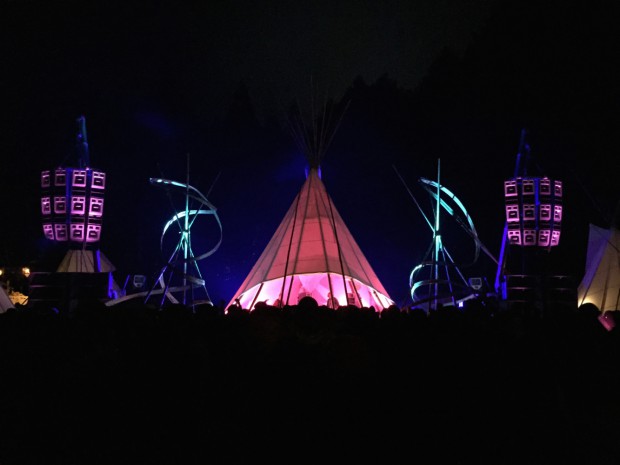
 Fr
Fr Eng
Eng
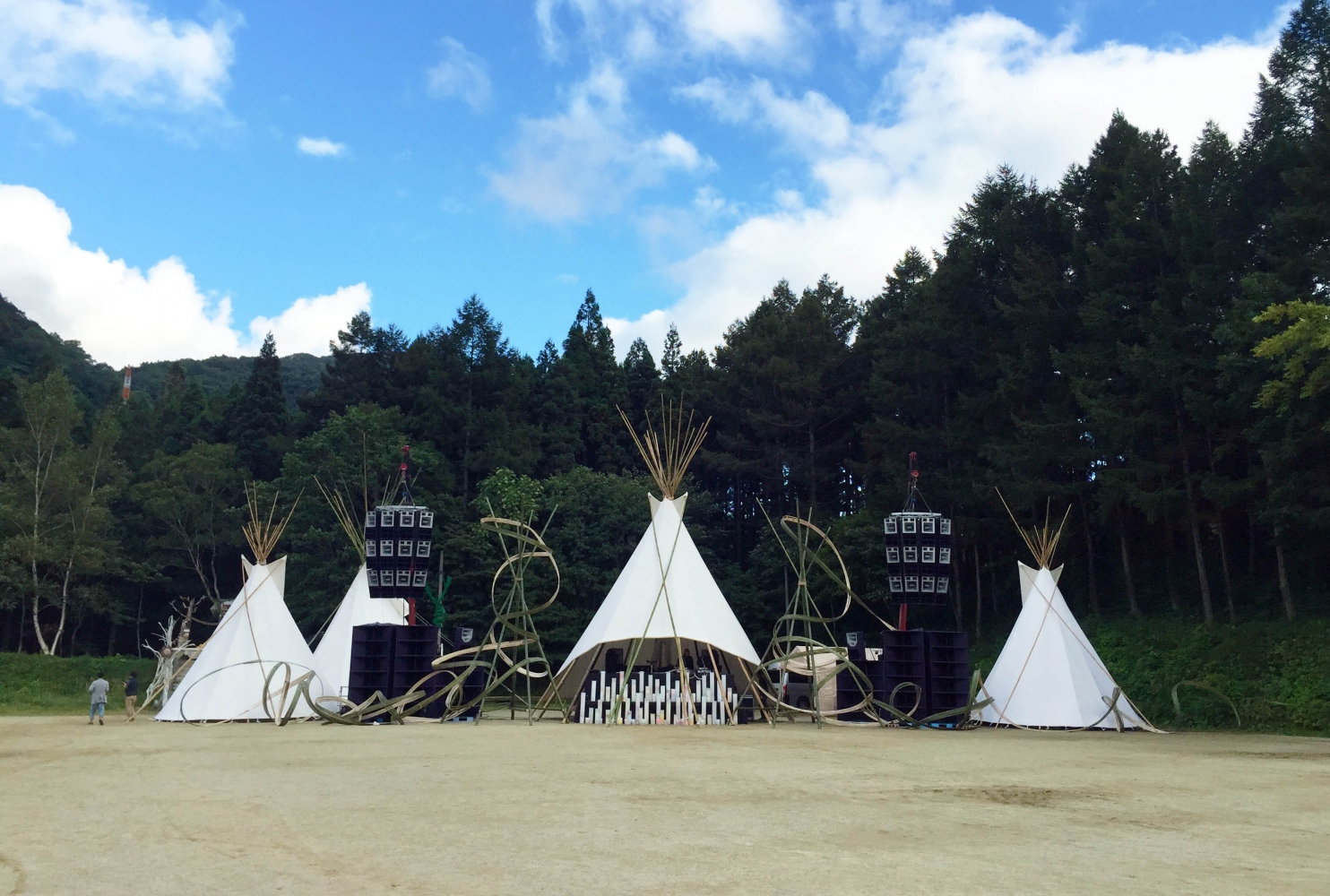
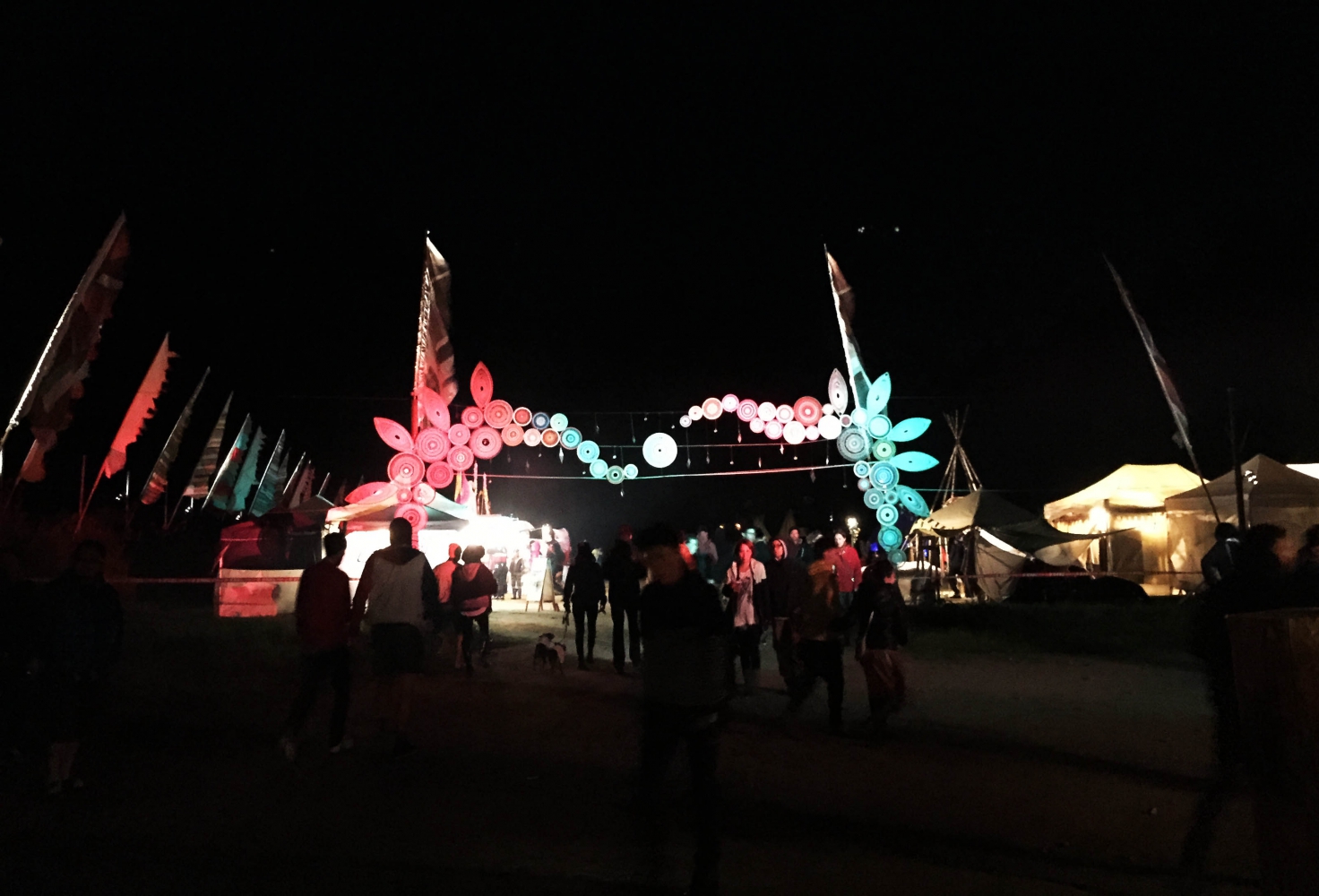
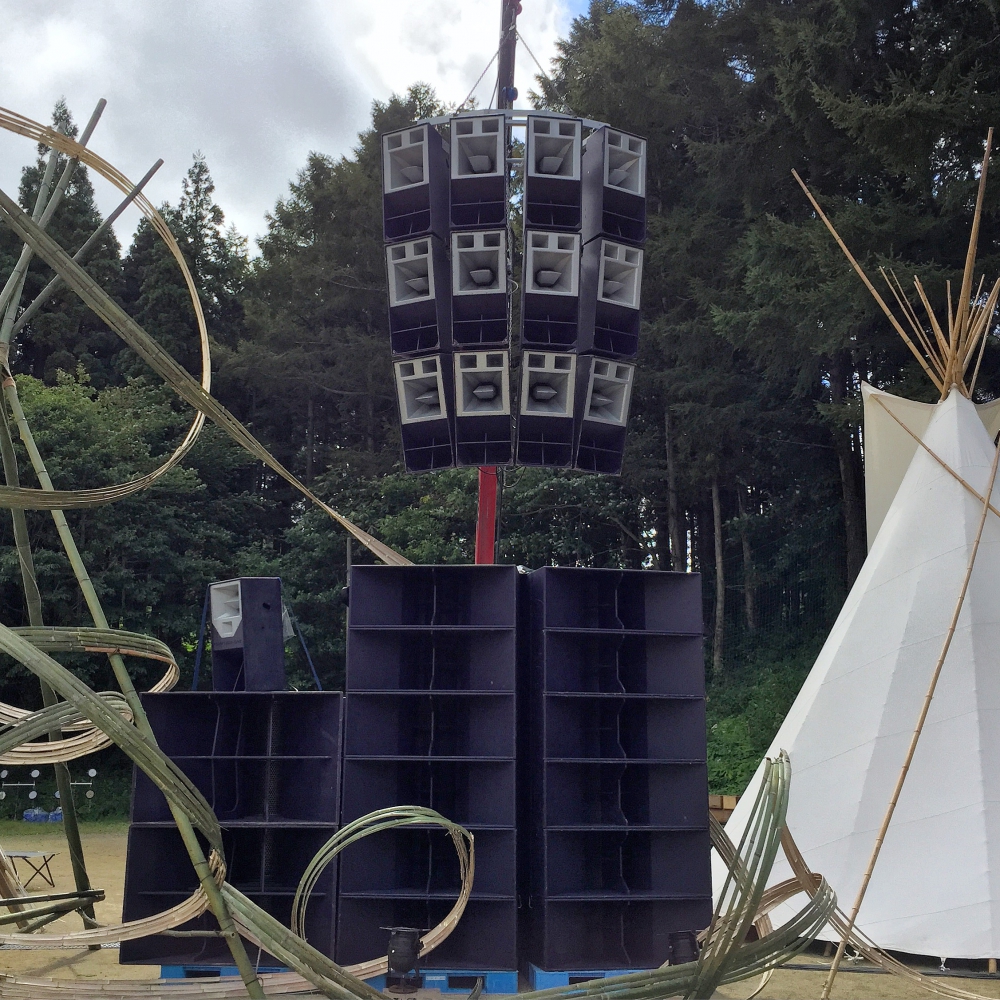
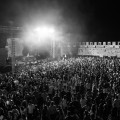
![DONATO DOZZY & NEEL – VOICES FROM THE LAKE [PROLOGUE]](https://www.inputselector.fr/wp-content/uploads/2012/02/DONATO-DOZZY-NEEL-–-VOICES-FROM-THE-LAKE-PROLOGUE.jpg)
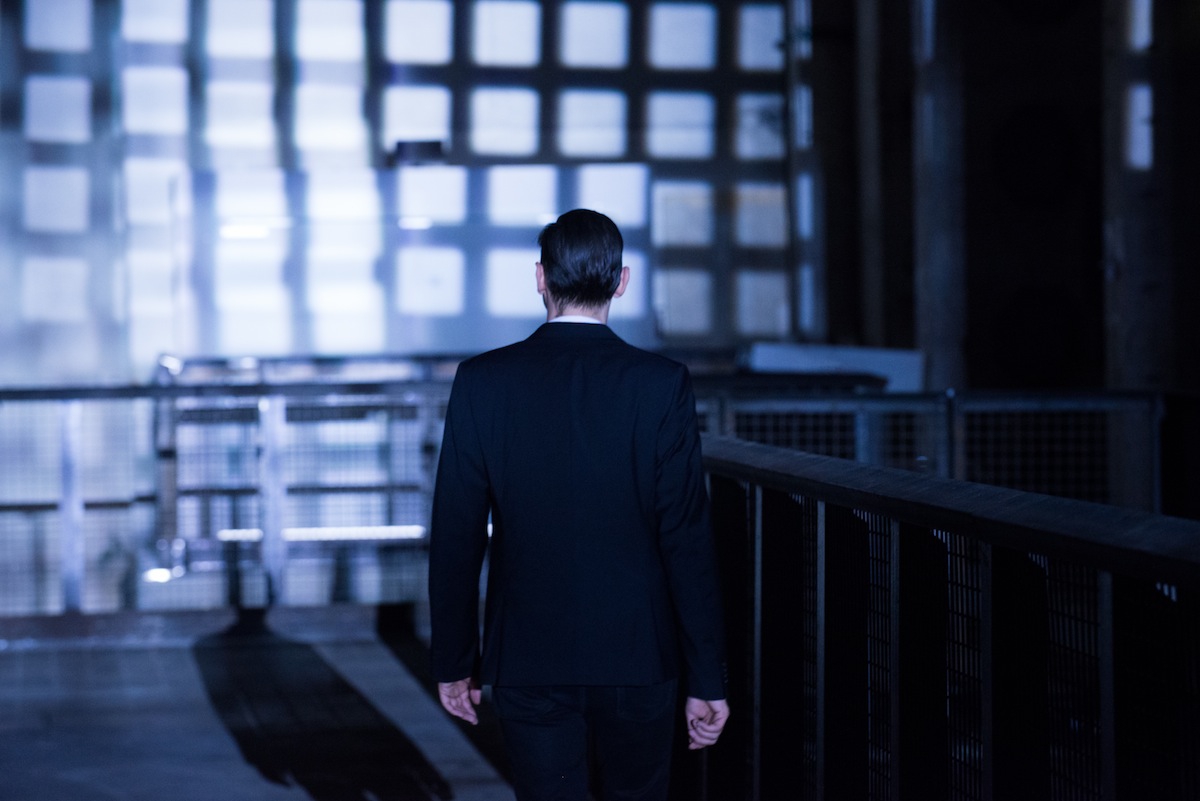
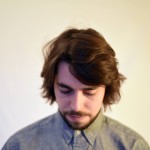
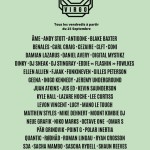
![IS Special 006 – Ithy Fall [Essential Groove] Ithy Fall](https://www.inputselector.fr/wp-content/uploads/2015/01/Ithy-Fall-300x200.jpg)
![IS 337 – Idealist [Idealistmusic, Echocord Records] IS 337 - Idealist [Idealistmusic, Echocord Records]](https://www.inputselector.fr/wp-content/uploads/2018/10/IS-337-Idealist-Idealistmusic-Echocord-Records-300x200.jpg)
![IS 318 – Jef K [Silver Network] IS 318 - Jef K [Silver Network]](https://www.inputselector.fr/wp-content/uploads/2017/03/IS-318-Jef-K-Silver-Network-300x199.jpg)